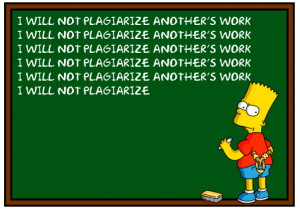These insights were gleaned from a video of industry experts, Dr. Palloff and Dr. Pratt discussing effective methods for dealing with plagiarism in distance education.
- What plagiarism detection software is available to online instructors?
Tools like Turnitin, Duplichecker and Paper Rater are available to instructors.
- How can the design of assessments help prevent academic dishonesty?
The instructor should design robust assessments that require depth of thought as opposed to one-word answers. These assessments should require an application of the concepts at hand so that the instructor can observe the student’s individual thought process. This type of design deters academic dishonesty because word-for-word plagiarism of this type of assignment would be very easily detectable.
- What facilitation strategies do you propose to use as a current or future online instructor?
I like Dr. Pratt’s method of allowing collaborative work even for cumulative assessments. I would employ a similar practice encouraging students to use any resource that they deem valuable and relevant. Facilitating becomes less critical with the types of expository writing assessments I previously discussed.
- What additional considerations for online teaching should be made to help detect or prevent cheating and plagiarism?
Instructors should preempt any cheating or plagiarism attempts by empowering students–that is making them aware of resources like the institution library and/or writing centers. These resources can ensure that students have a working knowledge of how to properly cite, paraphrase etc.
Reference:
Laureate Education (Producer). (2010). Plagiarism and cheating [Video file]. Retrieved from https://class.waldenu.edu


Asha, good post. I have heard of paper rate. Do you know if it is a free resource? I would like to share a free resources with my fellow teachers.
Yep Chris! According to my source its free 🙂
Asha,
Thanks for the great resources for plagiarism detections, I have never heard of paper rate. I had a very similar post in regards to the need for the assessments to be assigned in groups so that everyone is accountable and the likelihood of cheating taking place is reduced. I also agree that the instructor should educate the class on the available resources so that they are less likely to use someone else’s work.
Krista
Hi Asha,
Great insights! I appreciate your pointing out the value of a good, “robust” assessment that pushes for a higher level of thinking and responding versus focusing on rote and lower level thinking. This is pretty much the standard for any learning taxonomy. The more you ask the learner to word things in their own way and/or allow for authentic space for them to make connections and talk about those connections, I feel you reduce the ways in which plagiarism can happen. However, I still have concerns about paraphrasing issues and when something is considered common knowledge and isn’t. This is somewhat subjective to me even as a writer myself. The University of Wisconsin has a decent site with examples of good and bad paraphrasing (https://writing.wisc.edu/Handbook/QPA_paraphrase.htm).
Z.
Insightful post Asha. It’s extremely important for instructors to make students aware of writing centers, libraries, and other literary tools. When I attended the University of Phoenix, I frequently used their Center for Writing Excellence. It was a great resource for me as I was new to online learning at the time. I have only used the Walden Writing Center once but found it to be helpful as well.
Hi Asha, I apologize if this is a repeat, there was an error when I posted my last reply. You make some good points. I agree that collaborative learning is a good way to prevent plagiarism. With more students working together, the less likelihood that there would be intentional plagiarism. What would you do if you found a portion of the group work was plagiarized, would you penalize the entire group or try to find out who wrote that portion of the assignment?